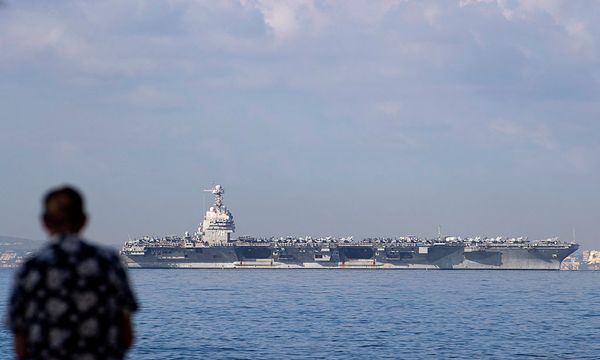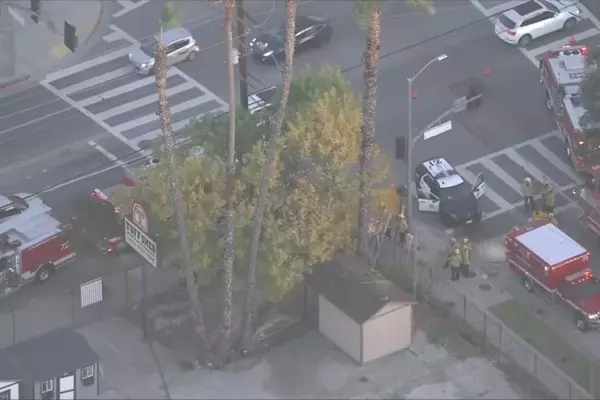This newsletter was first published in The Conversation UK’s World Affairs Briefing email. Sign up to receive weekly analysis of the latest developments in international relations, direct to your inbox.
There were emotional scenes in both Gaza and across Israel this week as people celebrated the prospect of an end to a war which has cost so many lives. Israel and Hamas agreed the first phase of a ceasefire deal which, if it holds, will bring an end to nearly two years of bitter conflict in the Gaza Strip.
The latest casualty count is devastating. On the Palestinian side, more than 67,000 people, most of them civilians and among them an estimated 20,000 children. Israel lost more than 1,800 people: about 1,200 – mainly civilians – during the Hamas attack of October 7 2023 and the rest killed during the assault on Gaza.
Footage and images from both sides show relief, joy and hope that this deal, for which Donald Trump can rightly claim much credit, will hold, that the Israeli hostages will be returned and that a process of healing can begin. For Palestinians there is also the hope that they can return to their homes and begin the process of rebuilding.
But what comes next is far from certain, as Scott Lucas, an expert in Middle East politics from University College Dublin, explains. For the ceasefire to hold, particularly once the 22 remaining live hostages and the bodies of 26 who have died in captivity are released to Israel, assumes a great deal of good faith on both sides. But particularly from Israel.
The release of the hostages removes any leverage Hamas might have had, Lucas writes. And the fact that Israel was still hitting Gaza with airstrikes hours after the US president announced that a deal had been done must cast some doubt on that good faith.
Nevertheless, the ceasefire is due to begin on Friday, after Israel’s cabinet meets to sign off on the hostage agreement. This is when the hard part begins, says Lucas. Hamas will be unwilling to comply with Israel’s demand to disarm and disband and take no further part in Palestinian politics. We don’t know how the future governance covered in Trump’s 20-point plan will work. We don’t know when and to what extent Israel will withdraw its troops.
And Israel’s prime minister, Benjamin Netanyahu, still has to get the deal past the two far-right cabinet ministers, Itamar Ben-Gvir and Bezalel Smotrich. Smotrich has already said he will oppose the deal.
But, for now at least, there is reason to hope. And this is something that has been in painfully short supply in Gaza of late.
Read more: Israel and Hamas agree ceasefire deal – what we know so far: expert Q&A
Trump’s idiosyncratic style of diplomacy may often appear hasty, clumsy and ill-judged. But it’s questionable whether this particular deal could have happened without him. Asaf Siniver believes Trump was key to getting both Israel and Hamas into line. Siniver, an expert in international security from the University of Birmingham, highlights Trump’s apparent mastery of what is known as “dead cat diplomacy”.
This is a foreign policy approach identified by James Baker, former US secretary of state, in the late 1980s. He recalled in his memoir that he employed it during his own attempts at securing a peace deal between Israel and a delegation of negotiators from Palestine.
Siniver says dead cat diplomacy requires three things: “It must be perceived by the intransigent parties as a last-chance threat, it must be perceived as a credible move by the third party and there must be internal factors which limit the intransigent party’s capacity to ignore the threat.”
All three of these were met in the case of the recent negotiations between Israel and Hamas. It was just a case, to paraphrase Baker, of “laying the dead cats at Israel’s and Hamas’s doorsteps”. In other words, to publicly blame and shame both parties for any reluctance to advance the deal.
Trump did this famously by reporting he’d told the Israeli prime minister he was “always fucking negative” about the peace process. He made sure that everyone knew that he’d forced Netanyahu to apologise to Qatar for launching the airstrikes in early September to try to kill Hamas leaders.
His constant social media messaging to Hamas that it was the major obstacle to Middle East peace fulfilled the same principles. He told Hamas that he’d given Netanyahu carte blanche to “finish the job” and was aware of quite how isolated Hamas had become – not just from its former allies in the Arab states, but with the people it was ostensibly fighting to protect, the Gazans themselves.
Read more: How Donald Trump’s 'dead cat diplomacy' may have changed the course of the Gaza war
Two years of tragedy
There can be no doubt that, whatever the leaders on both sides thought, most ordinary people in Israel and Gaza just wanted the war to end. This week marked the second anniversary of the brutal October 7 Hamas attack on southern Israel. Yuval Katz, whose research has involved speaking to a lot of Israeli citizens about the war and examining social media reports from Gaza, feels that both sets of people were caught between two visions of what peace might mean.
For the politicians, particularly for Donald Trump, a solution for Gaza was part of something else. Trump saw it as the cornerstone of a broader US-sponsored deal for the Middle East: “I’m not just talking about Gaza … the whole deal, everything getting solved. It’s called peace in the Middle East.”
For the Israeli prime minister, the war was part of a delicate political manoeuvre to retain the backing of his far-right allies and keep himself in power.
Neither gave the impression they were in touch with the trauma of the ordinary people. Israelis felt the October 7 massacre and the hostages as a constant pain. Cases of PTSD and suicide among those who served in the military have soared over the two years.
Read more: October 7 two years on: Israelis and Palestinians caught between two conflicting ideas of peace
Two years of war have also reshaped the Middle East, writes Simon Mabon. Mabon, a scholar of Middle East politics at Lancaster University, outlines the profound ways the region has changed over two years. Iran and its proxies have had their wings severely clipped. In Lebanon, Hezbollah has been crippled. In Syria, Israel has taken advantage of the turmoil following the fall of Assad in December 2024 to carve itself out a buffer zone around the Golan Heights in the south.
Meanwhile, normalisation between Israel and Saudi Arabia – an extension of the Abraham accords which Trump saw as one of his major foreign policy achievements in his first term – has been set back considerably, certainly for years. A lot, says Mabon, will hang on what happens next in Gaza.
Read more: The two years of fighting since October 7 have transformed the Middle East
Donald Trump: Nobel peace laureate?
It’s highly unlikely Trump would be recognised at Friday’s Nobel peace prize announcement for a ceasefire deal that hasn’t even yet come into force. But if it does lead to a lasting peace, there will be plenty of speculation about whether the Nobel committee will recognise the US president in the future.
After all, there have arguably been more controversial choices. Colin Alexander, an expert in political communication at Nottingham Trent University, walks us through some of them.
Read more: The Nobel peace prize has a record of being awarded to controversial nominees
Sign up to receive our weekly World Affairs Briefing newsletter from The Conversation UK. Every Thursday we’ll bring you expert analysis of the big stories in international relations.
This article was originally published on The Conversation. Read the original article.







